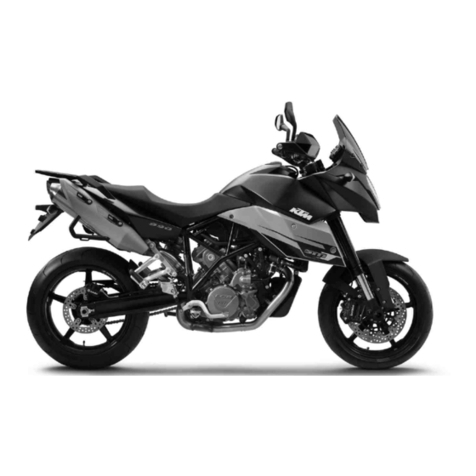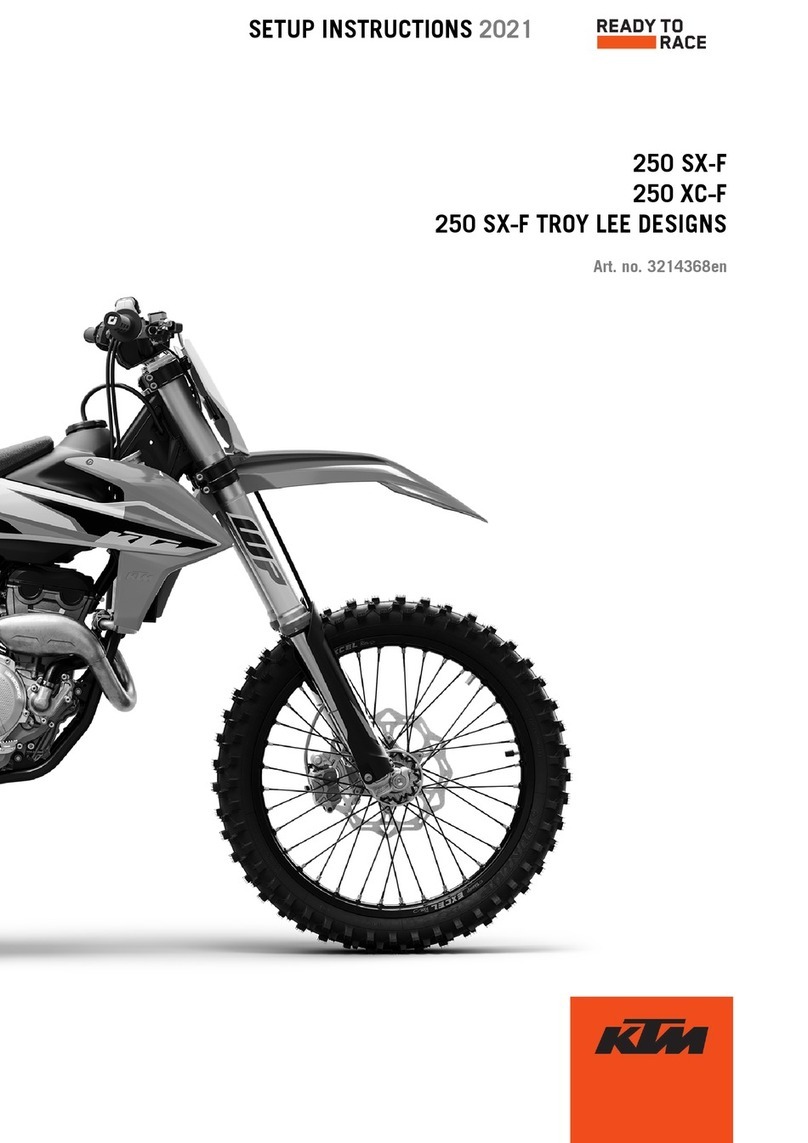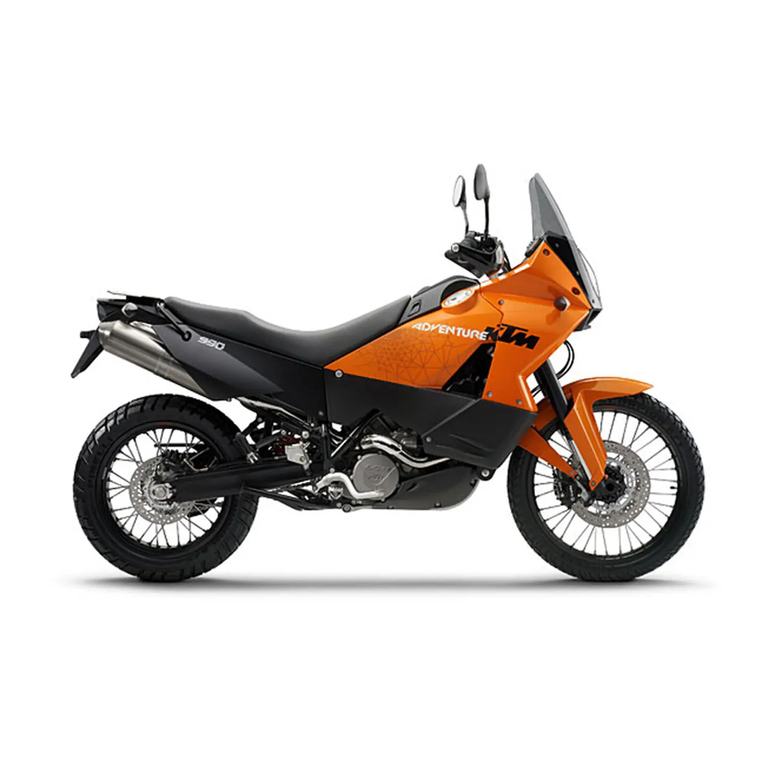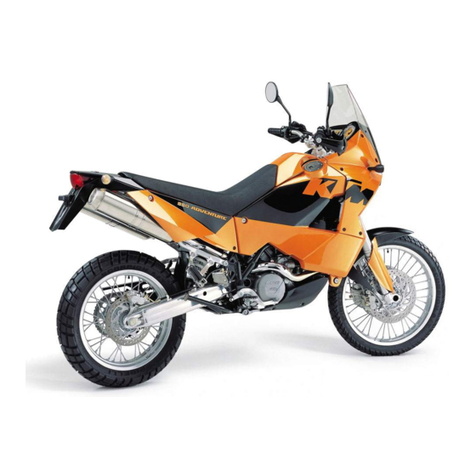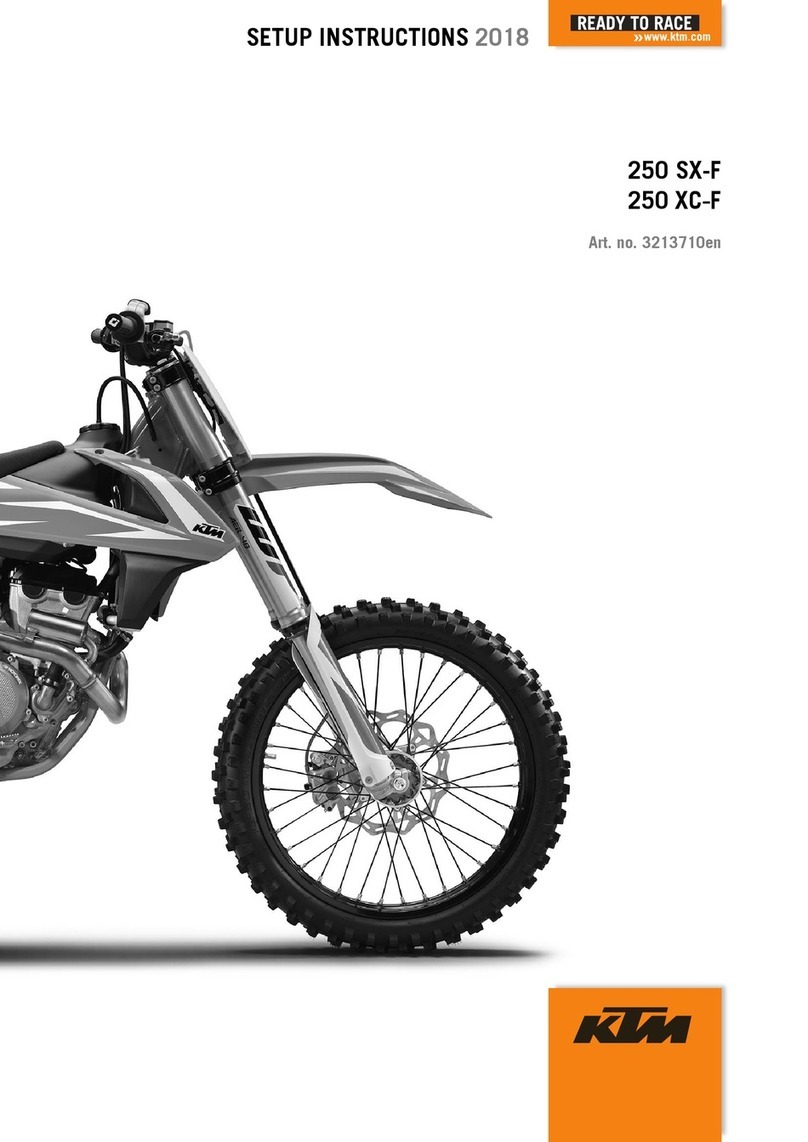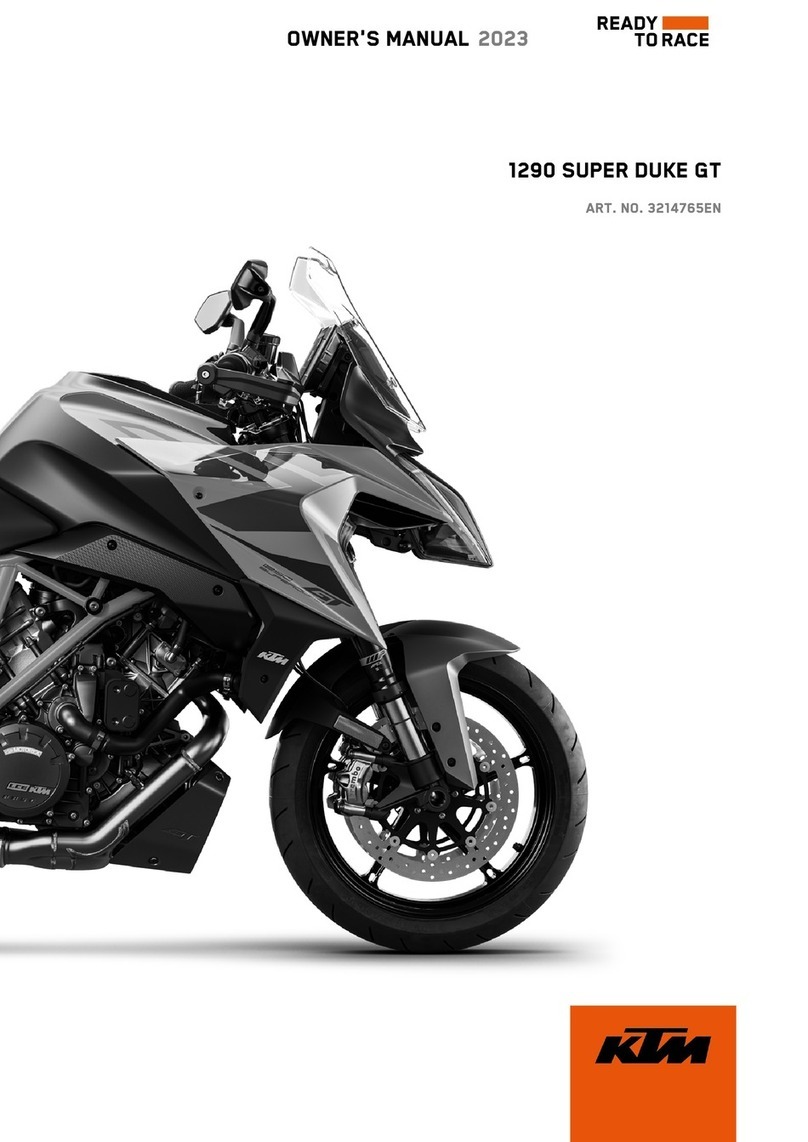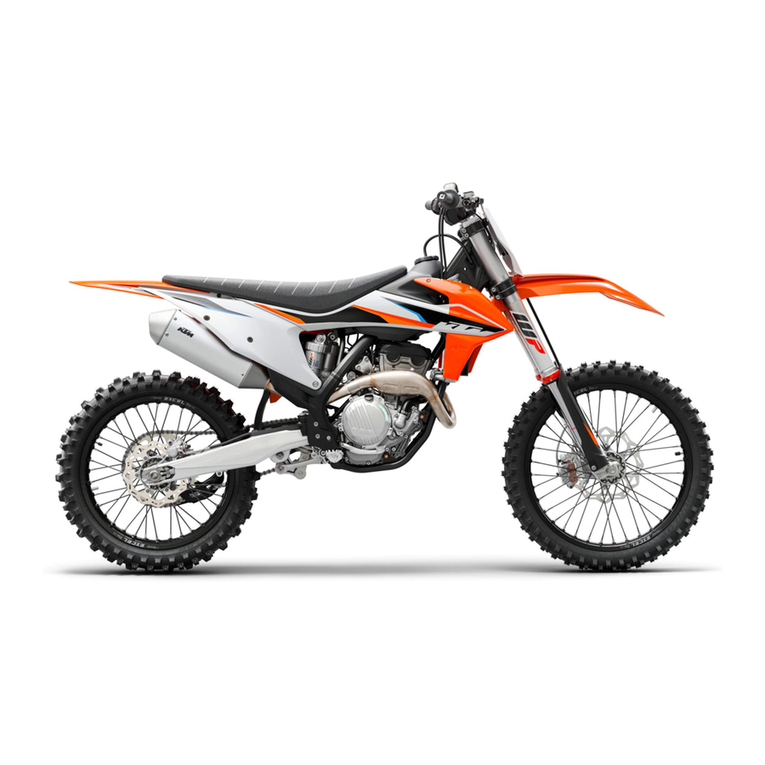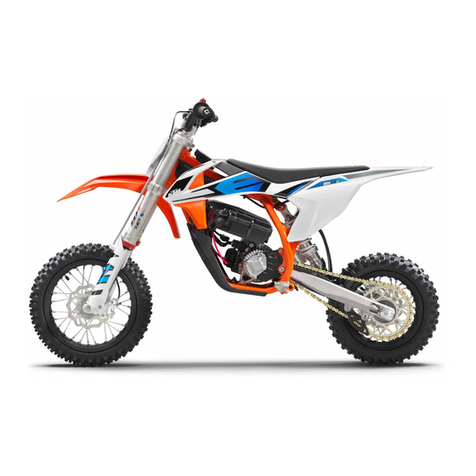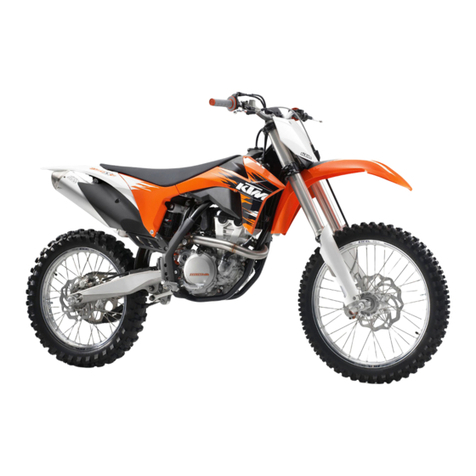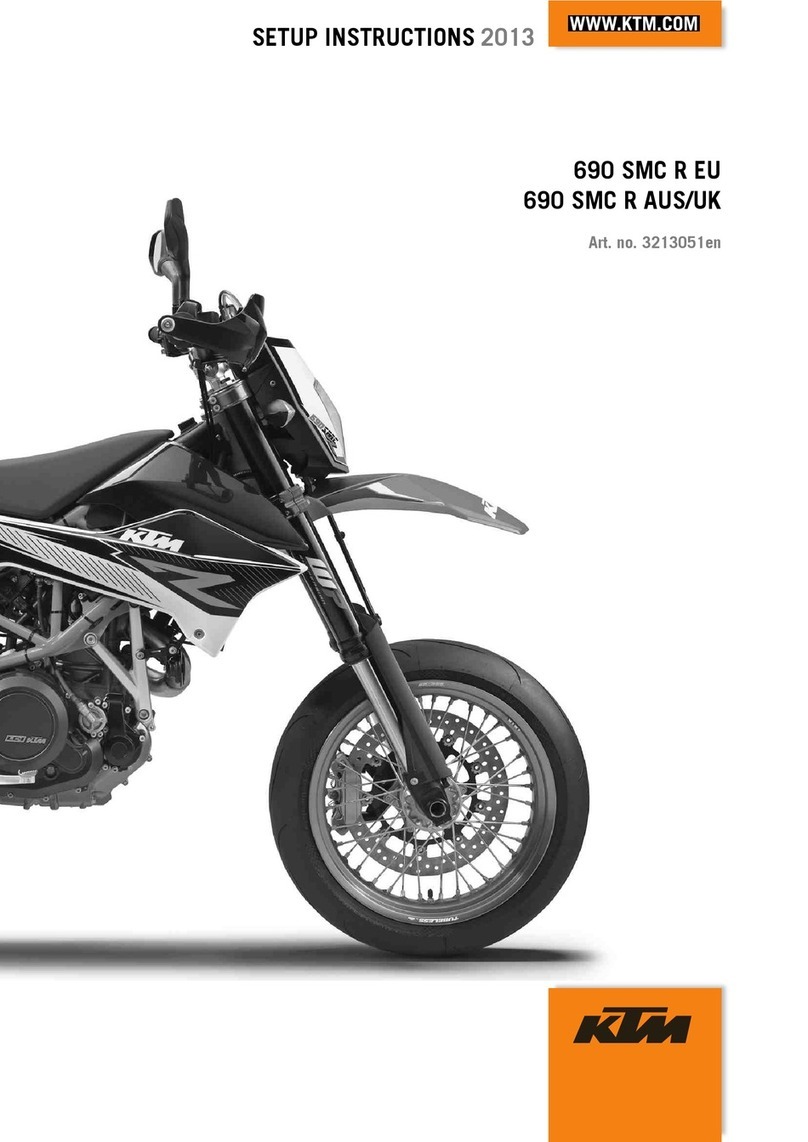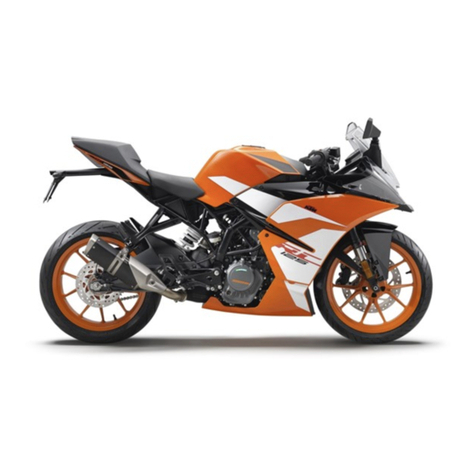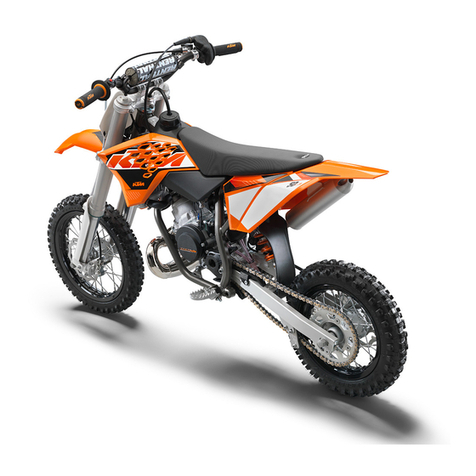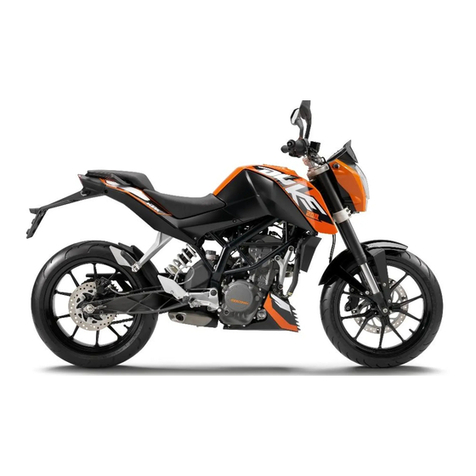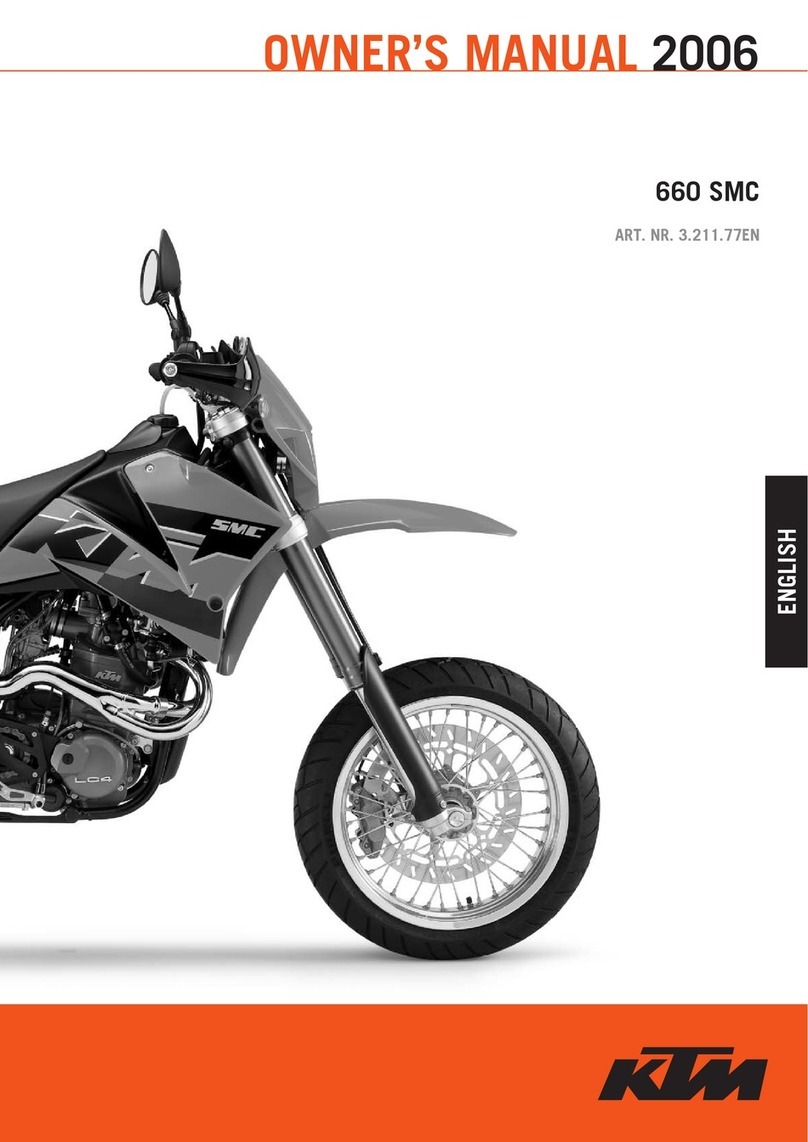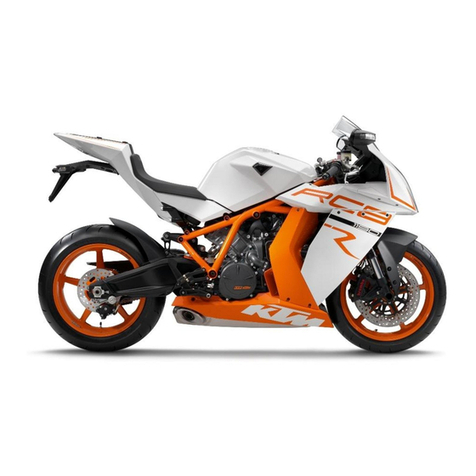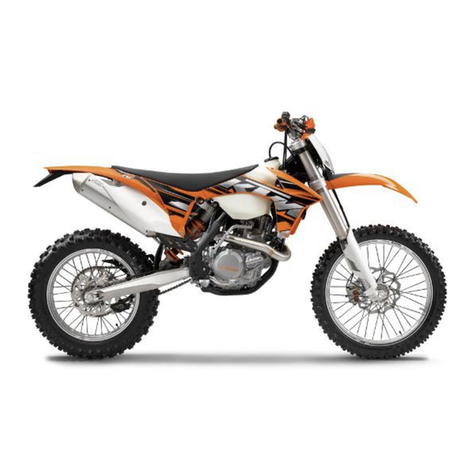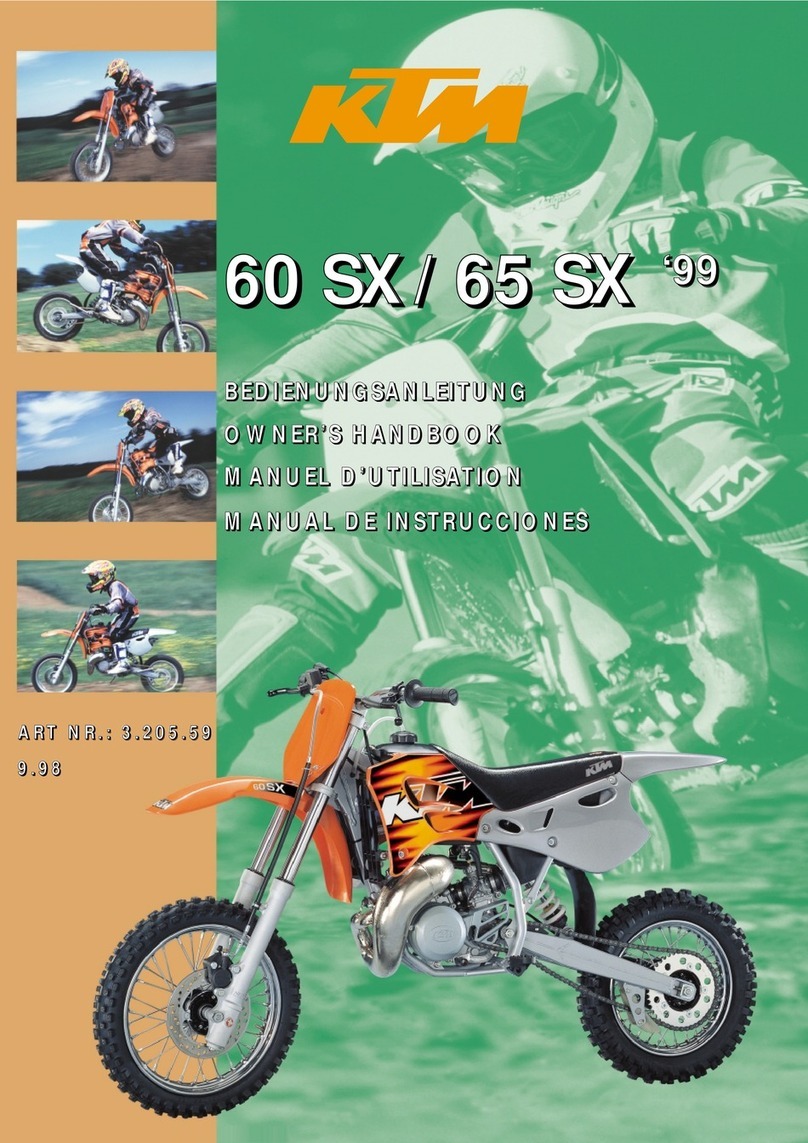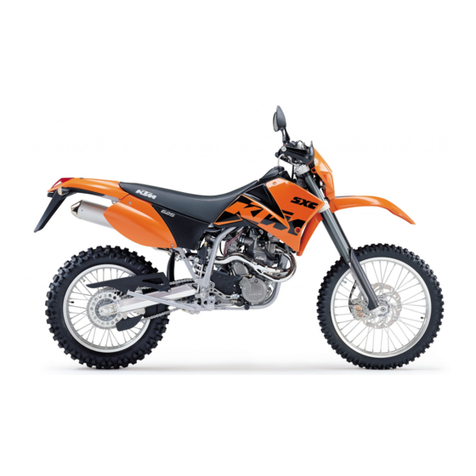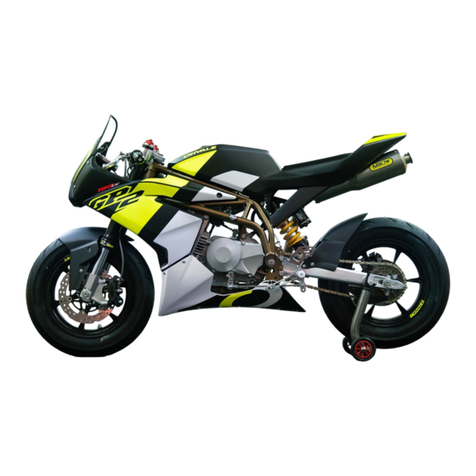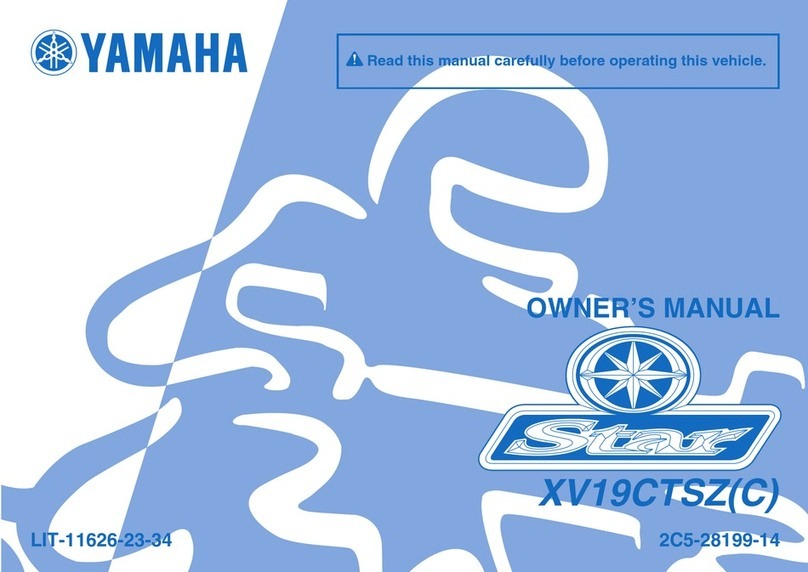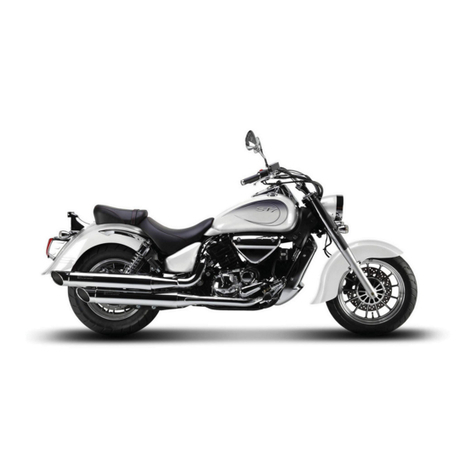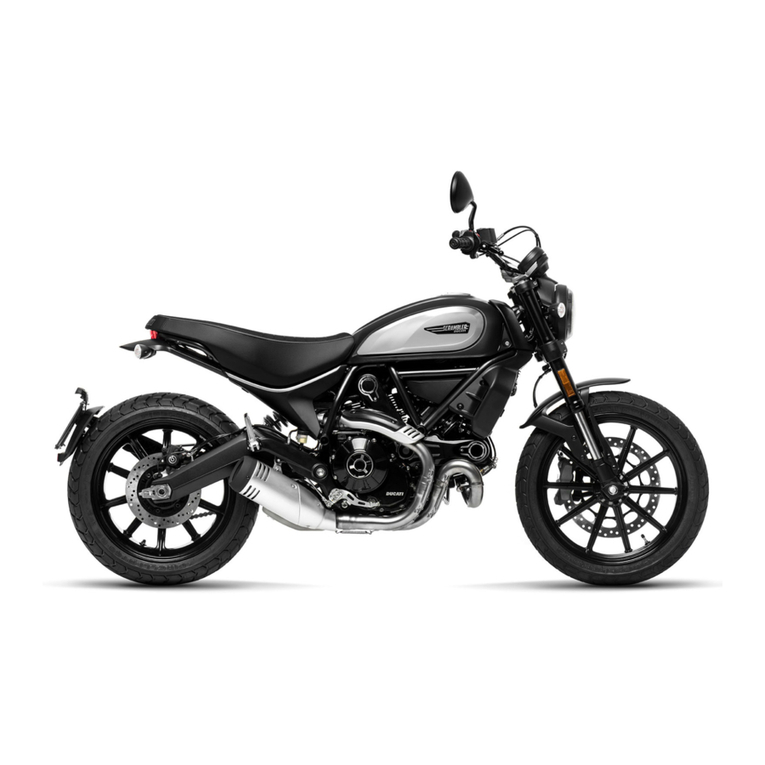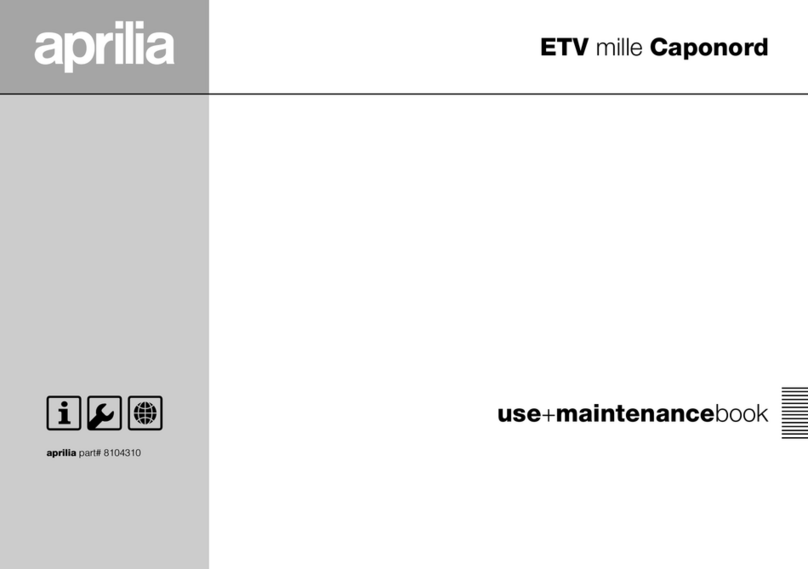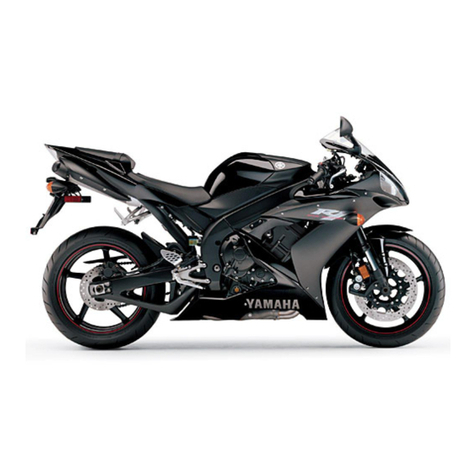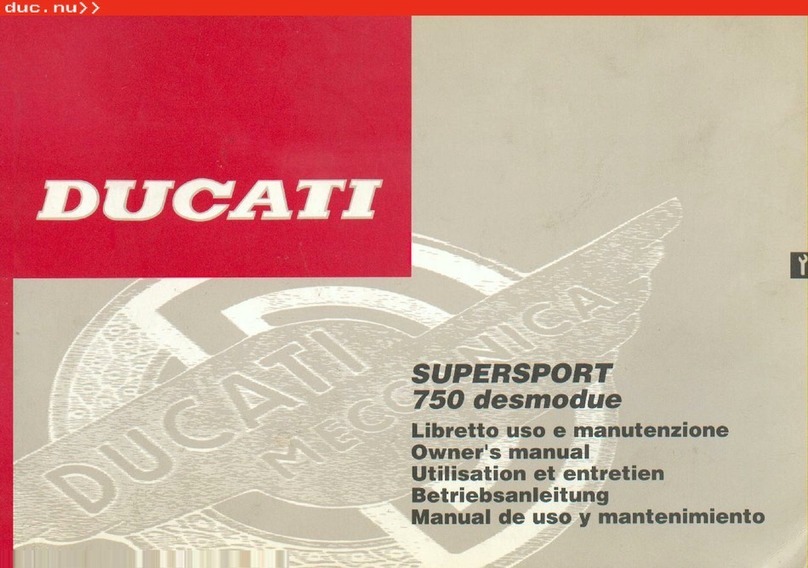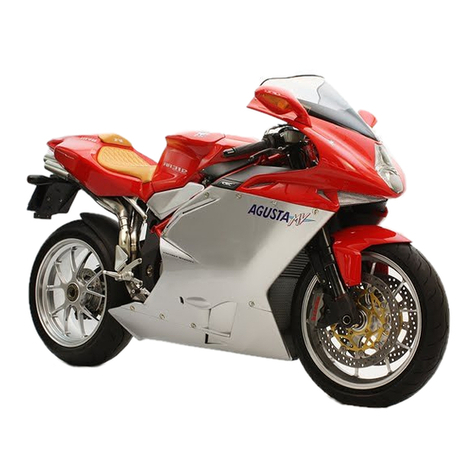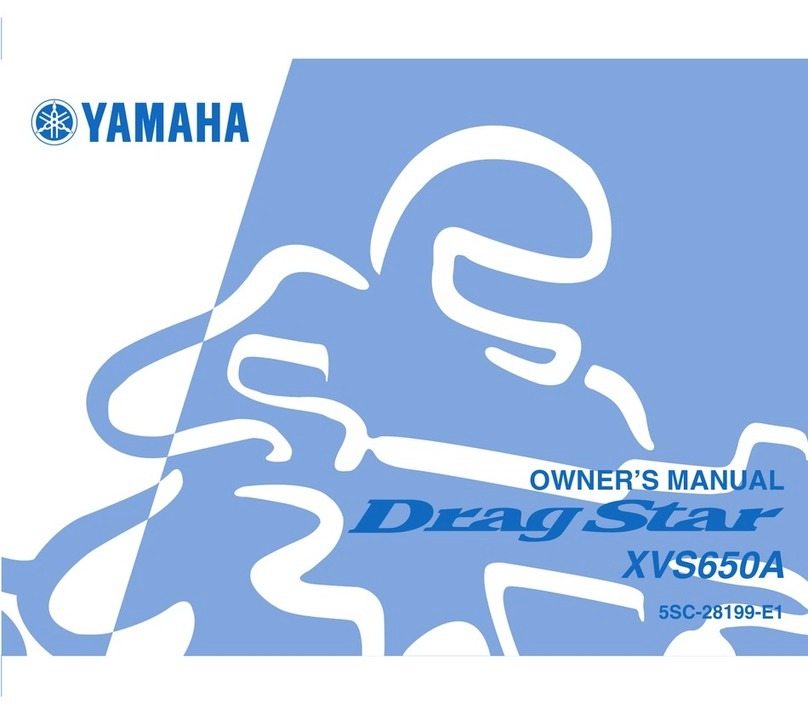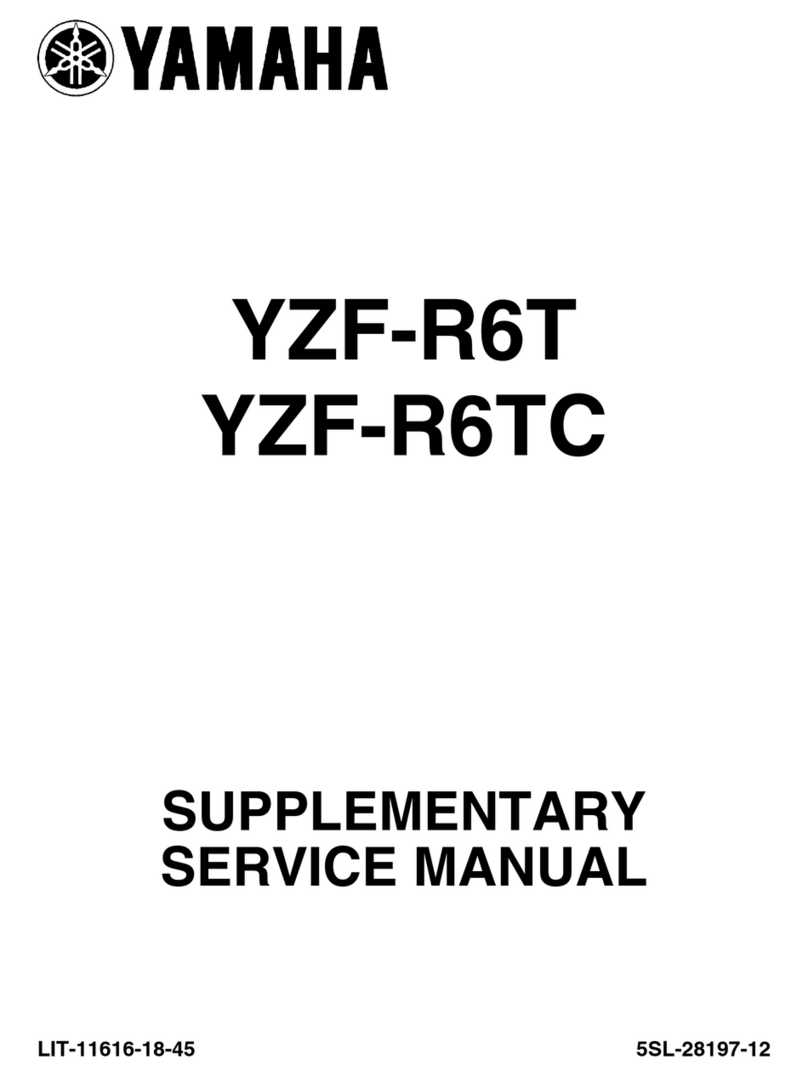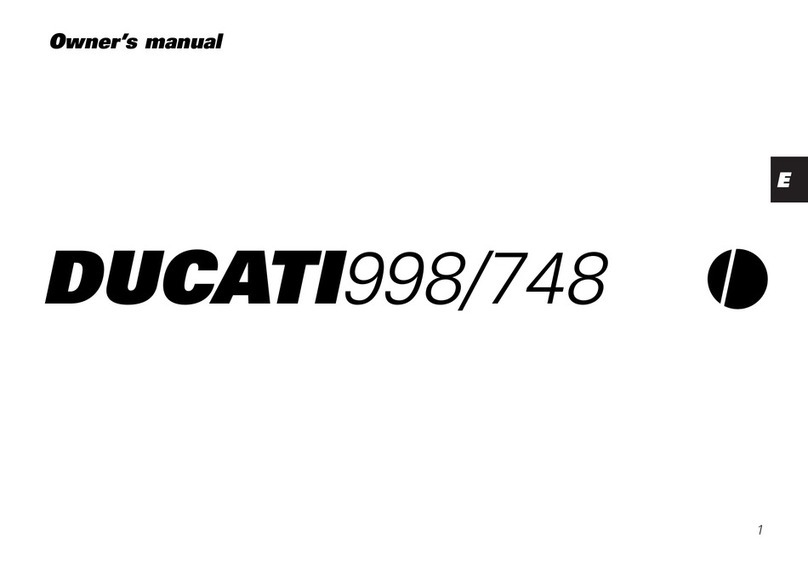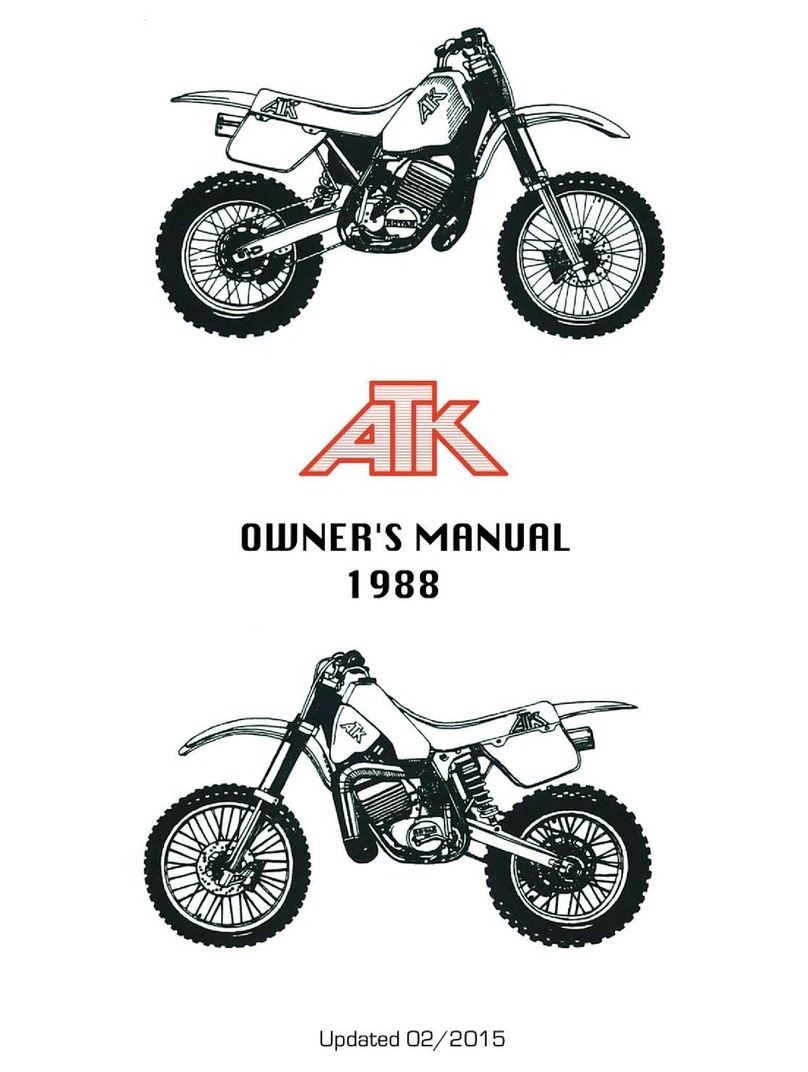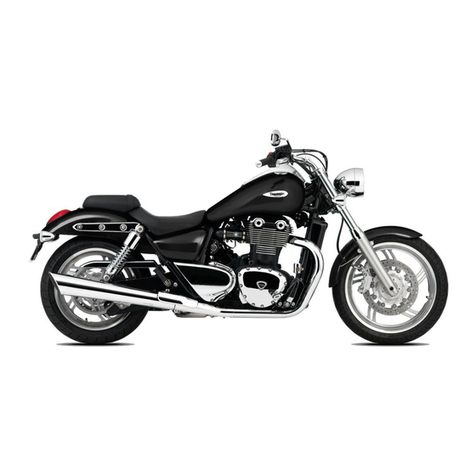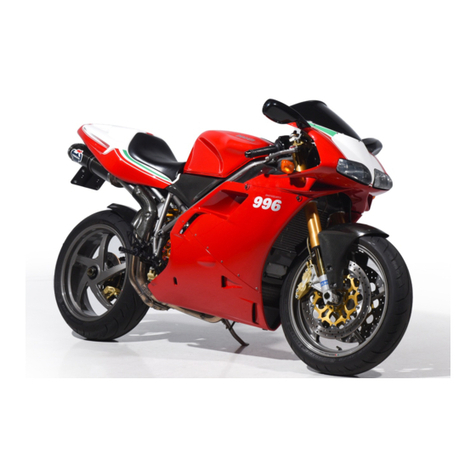ENGLISH
4
INDEX »
Page
SERIAL NUMBER LOCATIONS . . . . . . . . . . . . . . . . . . . .5
Chassis number . . . . . . . . . . . . . . . . . . . . . . . . . . . .5
Engine number, engine type . . . . . . . . . . . . . . . . . . . .5
OPERATION INSTRUMENTS . . . . . . . . . . . . . . . . . . . . .5
Clutch lever . . . . . . . . . . . . . . . . . . . . . . . . . . . . . . .5
Hand decompression lever . . . . . . . . . . . . . . . . . . . . .5
Choke lever . . . . . . . . . . . . . . . . . . . . . . . . . . . . . . . .5
Hand brake lever . . . . . . . . . . . . . . . . . . . . . . . . . . . .6
Speedometer . . . . . . . . . . . . . . . . . . . . . . . . . . . . . .6
Tachometer . . . . . . . . . . . . . . . . . . . . . . . . . . . . . . . .6
Indicator lamps . . . . . . . . . . . . . . . . . . . . . . . . . . . . .6
Ignition lock . . . . . . . . . . . . . . . . . . . . . . . . . . . . . . .6
Combination switch . . . . . . . . . . . . . . . . . . . . . . . . . .7
Emergency OFF tip switch, light switch, starter tip switch . .
7
Filler cap . . . . . . . . . . . . . . . . . . . . . . . . . . . . . . . . .7
Fuel tap . . . . . . . . . . . . . . . . . . . . . . . . . . . . . . . . . .8
Shift lever . . . . . . . . . . . . . . . . . . . . . . . . . . . . . . . .8
Kickstarter . . . . . . . . . . . . . . . . . . . . . . . . . . . . . . . .8
Foot brake pedal . . . . . . . . . . . . . . . . . . . . . . . . . . . .8
Compression damping of fork . . . . . . . . . . . . . . . . . . .9
Rebound damping of fork . . . . . . . . . . . . . . . . . . . . .9
Compression damping of shock absorber . . . . . . . . . . .9
Rebound damping of shock absorber . . . . . . . . . . . . .9
Seat lock . . . . . . . . . . . . . . . . . . . . . . . . . . . . . . . . .9
GENERAL TIPS AND WARNINGS FOR STARTING
THE MOTORCYCLE . . . . . . . . . . . . . . . . . . . . . . . . . . .10
Instructions for initial operation . . . . . . . . . . . . . . . .10
Running in . . . . . . . . . . . . . . . . . . . . . . . . . . . . . . .10
Driving instructions . . . . . . . . . . . . . . . . . . . . . . . . . . .11
Check the following before each start . . . . . . . . . . . .11
Starting when the engine is cold . . . . . . . . . . . . . . .12
Starting when the engine is warm . . . . . . . . . . . . . . .12
What to do when the engine is „flooded” . . . . . . . . .12
Kickstart instructions . . . . . . . . . . . . . . . . . . . . . . . .13
Starting off . . . . . . . . . . . . . . . . . . . . . . . . . . . . . . .13
Shifting/Riding . . . . . . . . . . . . . . . . . . . . . . . . . . . .13
Braking . . . . . . . . . . . . . . . . . . . . . . . . . . . . . . . . .13
Stopping and parking . . . . . . . . . . . . . . . . . . . . . . .14
Refueling . . . . . . . . . . . . . . . . . . . . . . . . . . . . . . . .14
Activating the ignition curve for low-octane fuel . . . . .15
PERIODIC MAINTENANCE SCHEDULE . . . . . . . . . . . . .16
MAINTENANCE WORK ON CHASSIS AND ENGINE . . . .18
Removing the sea . . . . . . . . . . . . . . . . . . . . . . . . . .18
Supporting strap for the passenger . . . . . . . . . . . . . .18
Tool kit . . . . . . . . . . . . . . . . . . . . . . . . . . . . . . . . . .18
Checking and adjusting the steering head bearing . . .19
Bleeder screw front fork . . . . . . . . . . . . . . . . . . . . . .19
Cleaning the dust sleeves of the telescopic fork . . . . .19
Changing the spring preload of the shock absorber . . .20
Checking the rubber ring of the rear shock absorber . .20
Lubricating the shock absorber linkage . . . . . . . . . . .20
Checking chain tension . . . . . . . . . . . . . . . . . . . . . .21
Page
Correcting chain tension . . . . . . . . . . . . . . . . . . . . .21
Chain maintenance . . . . . . . . . . . . . . . . . . . . . . . . .21
Chain wear . . . . . . . . . . . . . . . . . . . . . . . . . . . . . . .22
Maintaining chain tension eccentrics . . . . . . . . . . . .22
General information about KTM disc brakes . . . . . . . .23
Changing the basic position of the handbrake lever . .24
Checking of brake fluid level – front brake . . . . . . . .24
Refilling the front brake fluid reservoir . . . . . . . . . . .24
Checking the front brake pads . . . . . . . . . . . . . . . . .24
Changing the basic position of the foot brake pedal . .25
Checking the rear brake fluid level . . . . . . . . . . . . . .25
Refilling the rear brake fluid reservoir . . . . . . . . . . . .25
Checking the rear brake pads . . . . . . . . . . . . . . . . . .25
Dismounting and mounting the front wheel . . . . . . . .26
Dismounting and mounting the rear wheel . . . . . . . . .26
Checking the damping rubbers in the rear wheel . . . .27
Tires, air pressure . . . . . . . . . . . . . . . . . . . . . . . . . .27
Battery . . . . . . . . . . . . . . . . . . . . . . . . . . . . . . . . . .28
Charging the battery . . . . . . . . . . . . . . . . . . . . . . . .28
Main fuse . . . . . . . . . . . . . . . . . . . . . . . . . . . . . . . .29
Fuses . . . . . . . . . . . . . . . . . . . . . . . . . . . . . . . . . . .29
Opening the headlight mask . . . . . . . . . . . . . . . . . . .29
Headlight range adjustment . . . . . . . . . . . . . . . . . . .30
Headlight – replacing the bulbs . . . . . . . . . . . . . . . .30
Parking light – replacing the bulb . . . . . . . . . . . . . . .30
Flasher – replacing the bulbs . . . . . . . . . . . . . . . . . .30
Stop light and tail light – replacing the bulb . . . . . . .31
Cooling system . . . . . . . . . . . . . . . . . . . . . . . . . . . .31
Checking the cooling liquid level . . . . . . . . . . . . . . .32
Cleaning of air filter . . . . . . . . . . . . . . . . . . . . . . . .32
Changing the original position of the clutch lever . . . .33
Checking the oil level of the hydraulic clutch . . . . . .33
Checking and adjusting the choke cable play . . . . . . .33
Checking the adjustment of the hand decompression cable
. .33
Adjust idling speed . . . . . . . . . . . . . . . . . . . . . . . . .34
Draining of float chamber of the carburetor . . . . . . . .34
Engine oil . . . . . . . . . . . . . . . . . . . . . . . . . . . . . . . .34
Checking the engine oil level . . . . . . . . . . . . . . . . . .34
Oil circuit . . . . . . . . . . . . . . . . . . . . . . . . . . . . . . . .35
Oil, oil filter and screen filter change,
bleeding of the oil system . . . . . . . . . . . . . . . . . . . .35
TROUBLE SHOOTING . . . . . . . . . . . . . . . . . . . . . . . . .37
CLEANING . . . . . . . . . . . . . . . . . . . . . . . . . . . . . . . . .40
CONSERVATION FOR WINTER OPERATION . . . . . . . . .40
STORAGE . . . . . . . . . . . . . . . . . . . . . . . . . . . . . . . . . .40
RE-INITIATION AFTER TIME OF STORAGE . . . . . . . . . .40
TECHNICAL SPECIFICATIONS – ENGINE . . . . . . . . . . .41
TECHNICAL SPECIFICATIONS – CHASSIS . . . . . . . . . .42
HEAD WORD INDEX . . . . . . . . . . . . . . . . . . . . . . . . . .44
WIRING DIAGRAMM . . . . . . . . . . . . . . . . . . . . .appendix
